After World War II, it was thought that the power of the atomic bomb would make war too terrible for any country to risk, and international stability and cooperation would be ensured through the new United Nations organization. For a brief while that seemed true, but then the Korean War began.
Coincidentally, the conflict on the Korean peninsula also almost resulted in the United States almost using atomic bombs again.
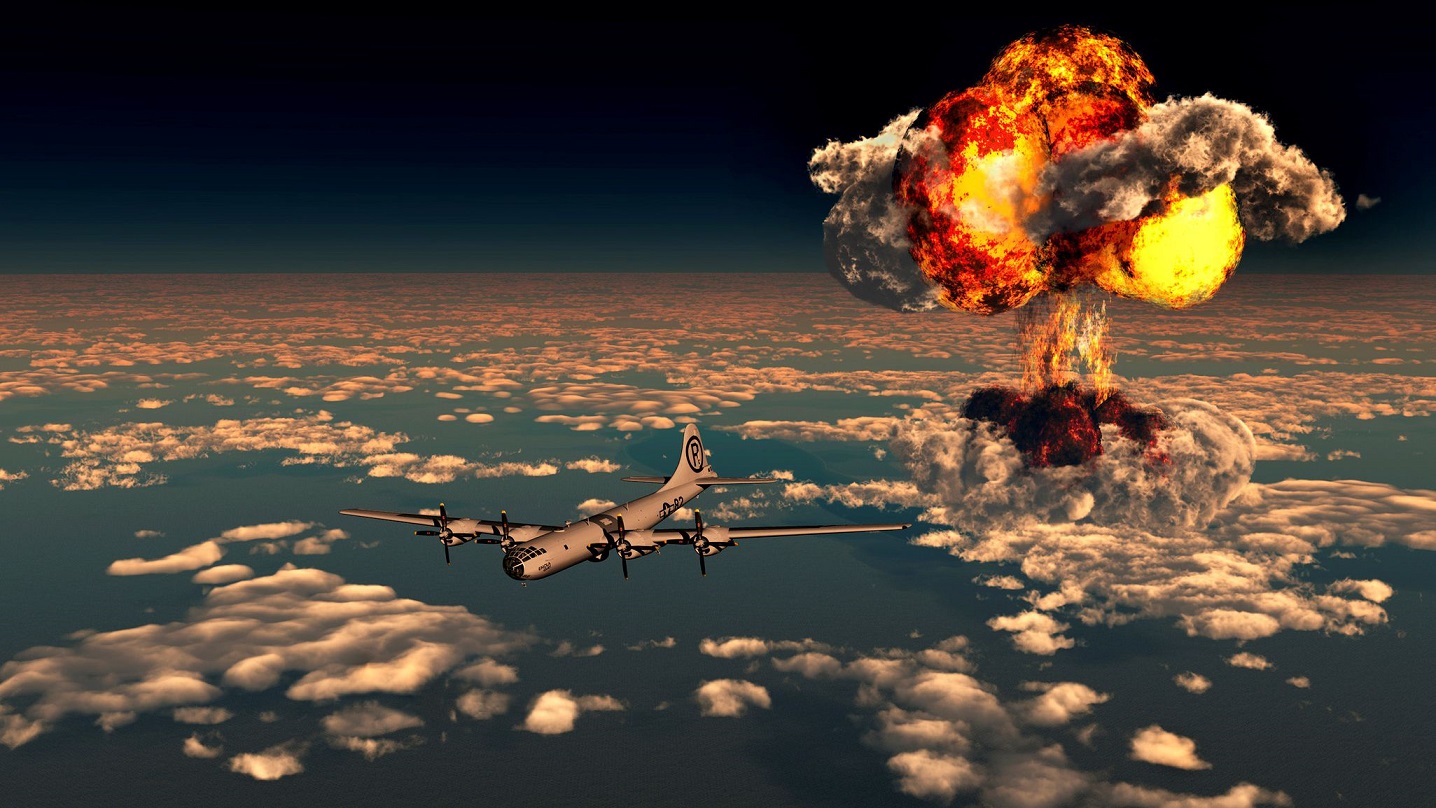
Post-World War II Balance of Power
While the Soviets would eventually develop nuclear weapons, at the time America was the only nation that was both nuclear-capable, and capable of delivering nuclear weapons over long ranges. So sure were the Americans of their strategic superiority, that the squadrons of B-29’s that had reigned fire and destruction on Japan were actually withdrawn from frontline service and taken to Arizona for retirement.
The Soviets however were no willing to give up their struggle for international communism to spread around the world, and in August 1945 the USSR broke its peace treaty with Japan and invaded Manchuria. As a result of the territory they gained control over, the USSR established and equipped a puppet communist government in North Korea. The USSR also established a communist puppet regime in Mongolia, and assisted Mao Zedong and the Chinese Communist Party with its consolidation of control over mainland China.
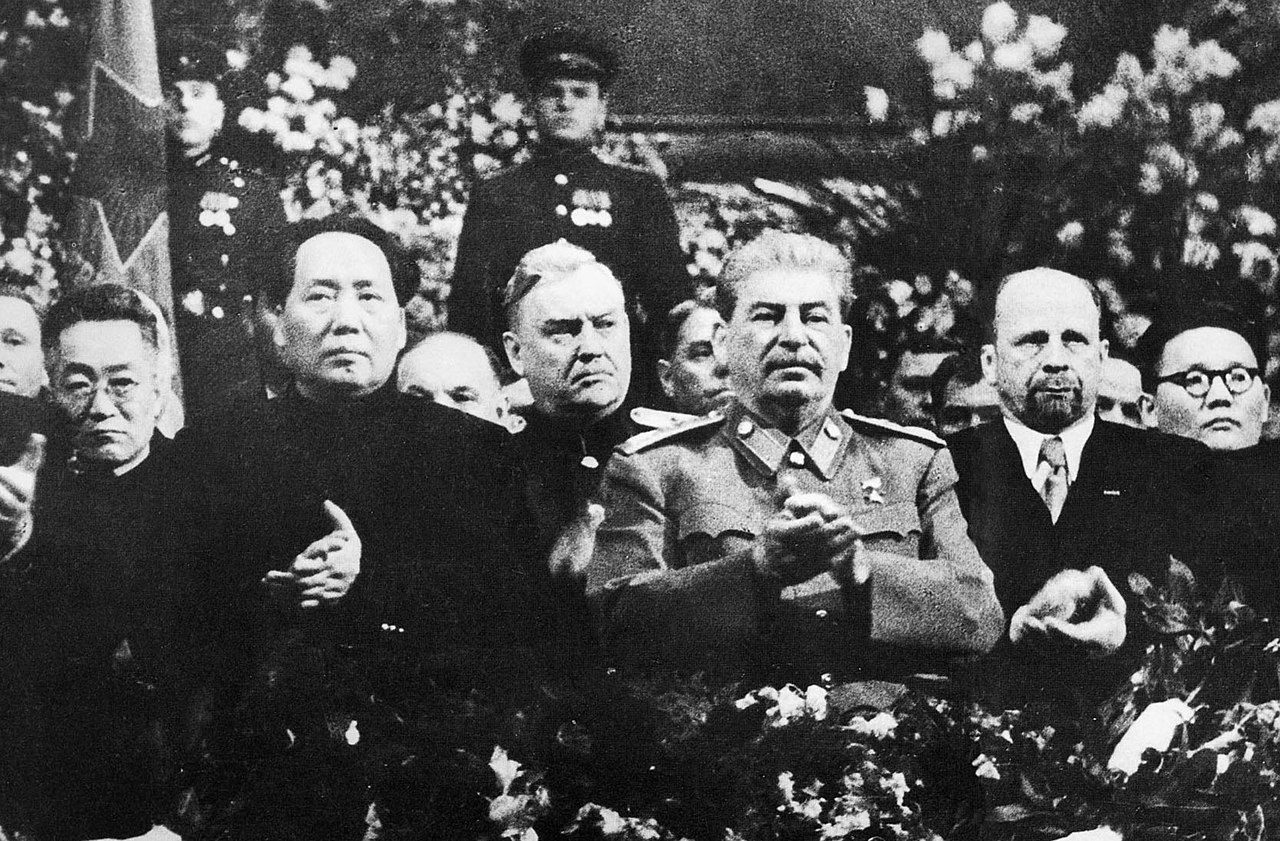
The situation south of the 38th Parallel was a bit more fluid than the strict control the Soviet Union and its local communist collaborators had imposed after the Japanese surrender. US Lieutenant General John R. Hodge had arrived on September 1945 to accept the surrender of the Japanese forces. As the appointed military governor, Hodge established and led the United States Army Military Government in Korea (USAMGIK) from September 1945 until July 1948.
A general election was held in South Korea in May of 1948, but the Soviet Union and the Korean Communist Party, and even many south Korean politicians boycotted it because of evidence of corruption and coercion. Indeed, the election is nowadays widely considered to have been manipulated by its winner, Syngman Rhee – who was elected President on 20 July 1948. With the freshly minted national constitution in hand, Rhee’s government then officially established the Republic of Korea (ROK) on 15 August 1948.
Meanwhile in the Soviet Korean Zone of Occupation in the north, the Soviet Union ran a sham election that led to the establish of a communist government under Kim Il-sung (grandfather of Kim Jong-un, the current “supreme leader” of North Korea). The Soviet Union withdrew its forces from Korea in 1948, but continued to devote considerable efforts in arming and training the North Korean armed forces.
As of 1949 mainland China was under the control of Mao Zedong and the communists as well, and they also assisted greatly with the development of the North Korean Army – even to the extent of contributing large numbers of personnel to help flesh out the ranks of the North Korean Army (known as the Korean People’s Army – KPA). By mid-1950, between 50,000 and 70,000 former PLA troops had entered North Korea, forming a significant part of the KPA’s strength on the eve of the war. By June 1950, the North had a full army on the border with South Korea – yet despite numerous intelligence warnings, the US and South Korean governments were still surprised when the KPA invaded on June 25, 1950.
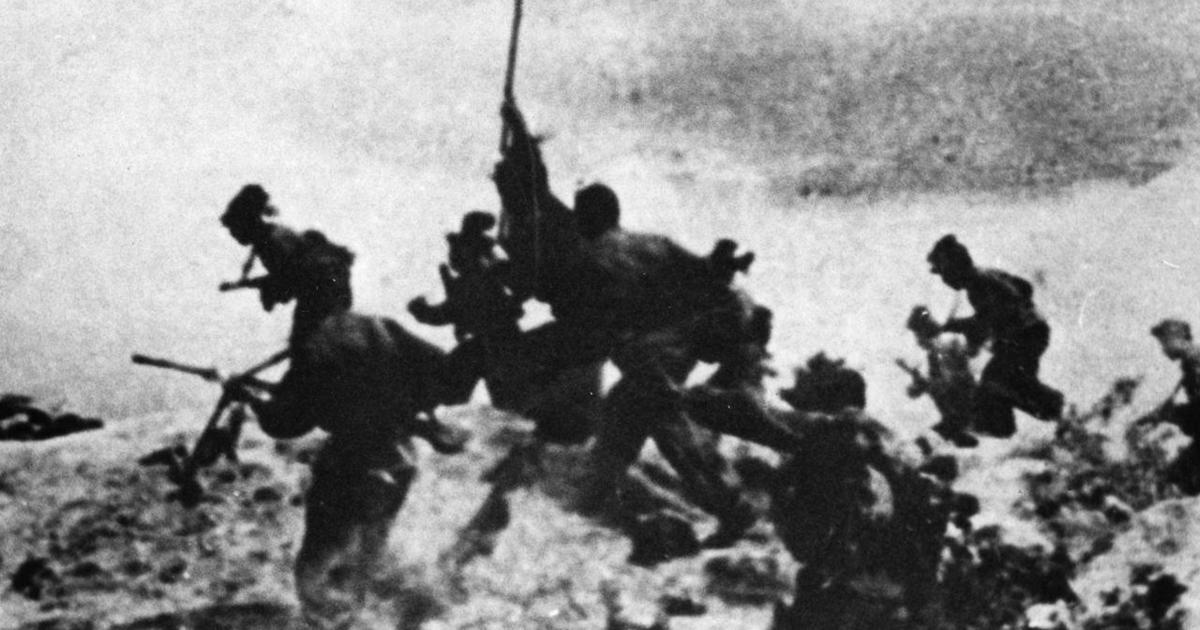
The Korean War
The KPA had a combined arms force including tanks supported by heavy artillery. The ROK had no tanks, anti-tank weapons or heavy artillery to stop such an attack. In addition, the South Koreans committed their forces in a piecemeal fashion and these were routed in a few days. On 27 June, Rhee was evacuated from Seoul along with some of the government. On 28 June, the ROK blew up the Hangang Bridge across the Han River in an attempt to stop the KPA – while some 4,000 refugees were still crossing it, killing hundreds. Despite such desperate measures, Seoul fell that same day. Within 5 days of fighting since the North Korean invasion the ROK Army had also gone from 95,000 men down to less than 22,00o.

In early July, US forces arrived and what was left of the ROK forces were placed under US operational control within the United Nations Command. The US quickly began to retaliate against the KPA’s numerical superiority by using a combination of B-29 bombers with fighter-bomber escort jets. The FEAF, or Far East Air Force, mobilized from Guam and Okinawa to ensure the best flight routes.
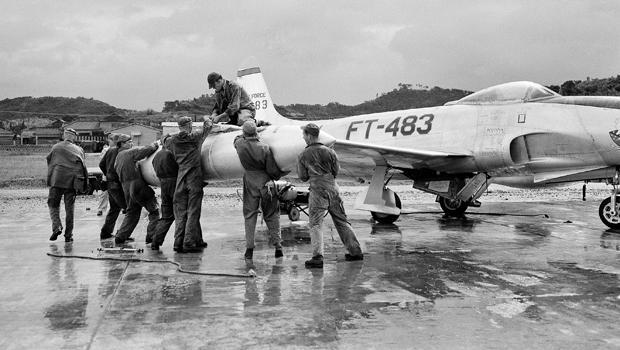
Despite the desperate situation on the ground however, President Truman had reservations about using the new-and-improved Mark 4 atomic bomb. While these fleets of B-29 Superfortresses were equipped to carry such bombs, the bombs themselves lacked the nuclear cores that would deliver ultimate devastation.
North Korea however viewed the US hesitancy to drop A-bombs as a show of weakness. But the biggest factor that ultimately prevented the U.S. from completely annihilating North Korea was political tension. Both US and South Korean political leadership feared that dropping the ultimate weapon on North Korea would provoke both China and the Soviet Union into entering the conflict, and so trigger another World War.
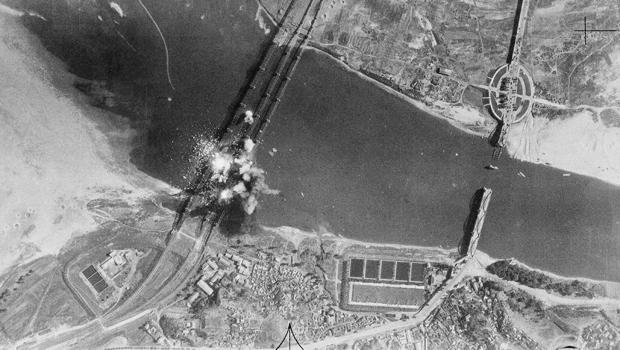
Because of this concern, even the conventional bombings by the B-29s were severely restricted. The B-29s were ordered to avoid populated areas and only strike targets that were military-specific locations, and they had to stay on the Korean side of the Yalu River.
As an extra precaution, and a sign of how nervous his administration was about the Soviet Union coming to the aid of its ally, President Truman also ordered B-29’s to be sent to Great Britain. From there, the fleet would be able to bomb the western Soviet Union if the need arose.
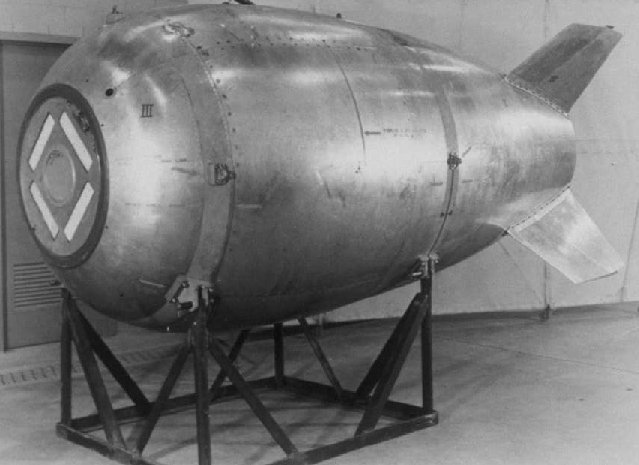
The situation on the Korean peninsula changed soon after however, with the appointment of General Douglas MacArthur as commander in chief of US and South Korean forces. MacArthur, who was headquartered in Tokyo, argued for a surgical strike near Seoul. This was denied until September 15, but after that date the B-29 strikes cut off the North Korean supply lines and US-led military forces were able to retake the city.
For his next move, MacArthur surprised everyone by launching an amphibious assault at Inchon – deep behind North Korean lines. With the North Korean Army trapped in a pincer between north and south, the US-led United Nations forces now went on the offensive and began to decimate the remaining North Korean forces.
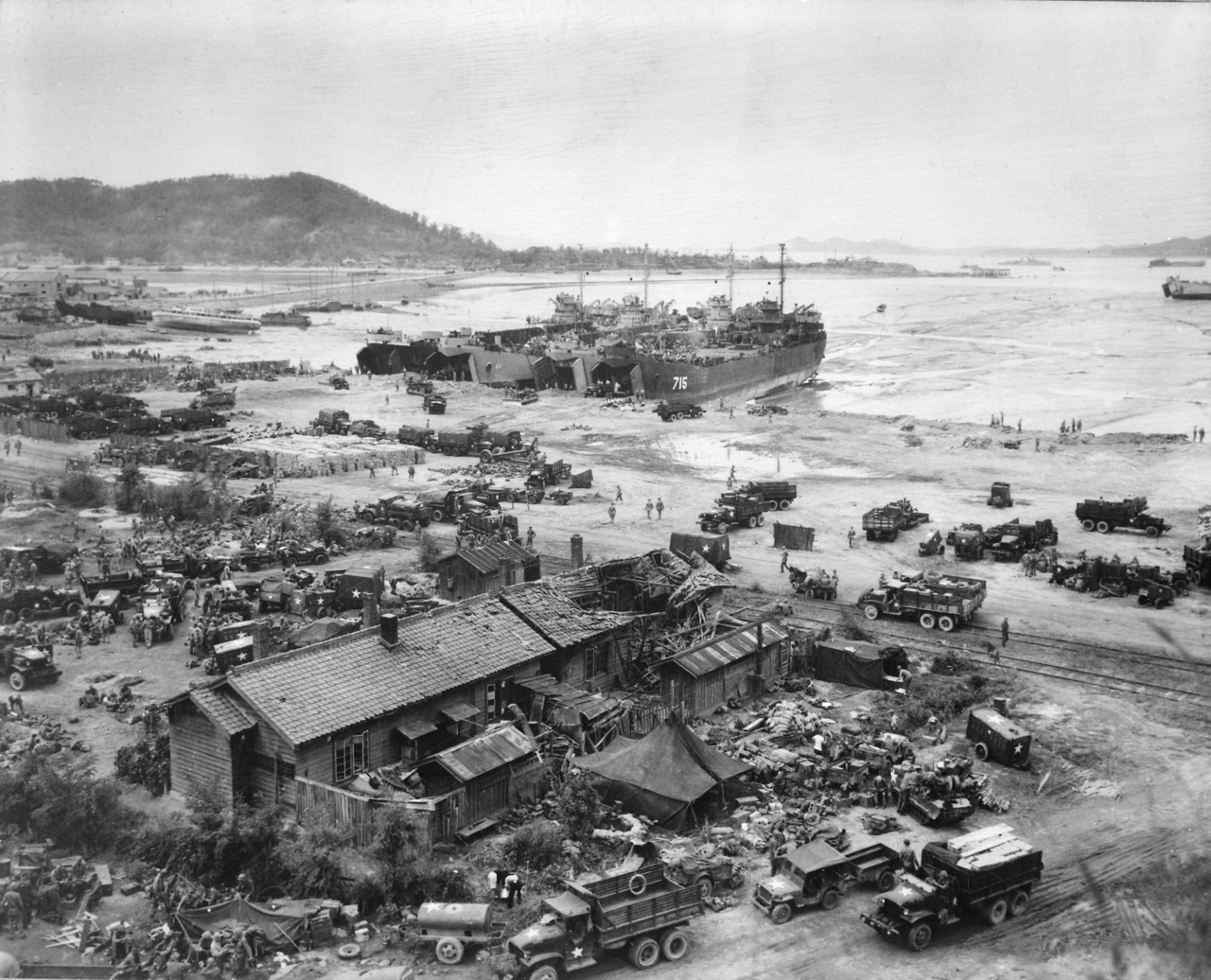
By November 1950 the North Korean units that were left had been pushed back to the Yalu River bordering North Korean and China. However, just when it looked like the war was about to be won, China intervened.
Chess Moves
As soon as the tables had turned against the North Koreans, China began secretly sending troops across Manchuria to amass along the border with North Korea. During the night of the 25-26 November 1950 300,000 Chinese soldiers streamed across the frozen Yalu River and launched a violent assault against the US / South Korean / United Nations forces.

Once again, the US government’s lack of an immediate use of resolute force became an issue. No one in the US leadership had believed that China would actually enter the war. Even General MacArthur didn’t believe that China would risk such an all-out confrontation. They were catastrophically wrong.
The air forces in theatre wanted to send waves of B-29s and tactical aircraft to mass-bomb the hordes of Chinese troops, but Truman didn’t want to risk an escalation of force that could also drag the Soviet Union into the conflict in aide of China. As a result of this imposed restraint, the Chinese Army quickly overwhelmed the United Nations forces and forces them into a hasty, and brutal, retreat out of North Korean territory.
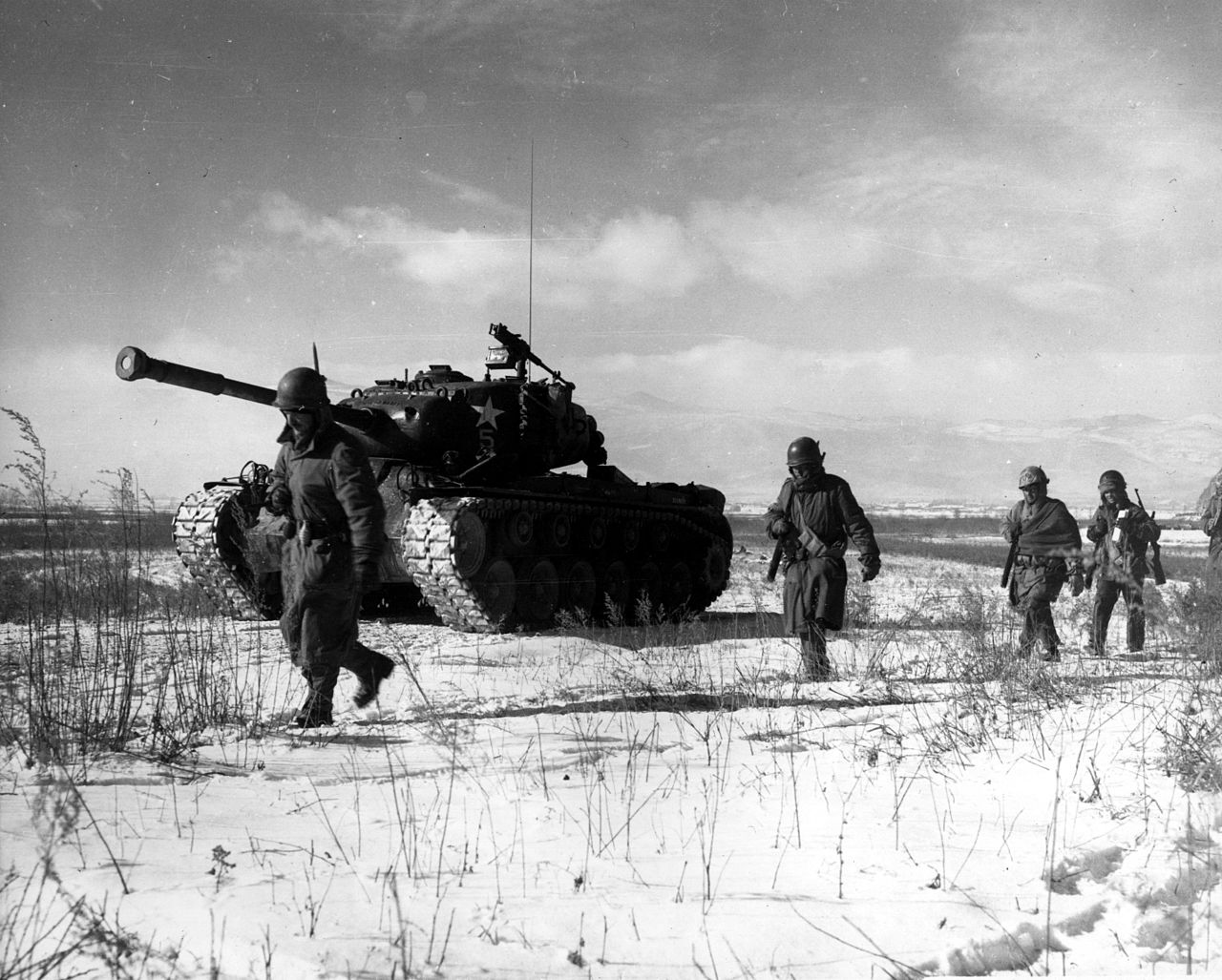
The United States was now in an embarrassing and precarious position. China had the upper hand, and didn’t fear the US nuclear arsenal, even though President Truman had stated that America would do whatever was necessary to win the war – including the use of nuclear bombs. Given the restraint and caution that the US had shown so far during the war though, to the Chinese this sounded like a laughably empty threat. To the Chinese Communist leadership the US was just a ‘paper tiger’.
Nonetheless, in April 1951, and for the first time since World War II, President Truman authorized nuclear-capable B-29’s to be stationed in Okinawa – putting them within range of North Korea. General MacArthur had actually argued in favor of using nuclear weapons from the very beginning – having proposed the dropping of dozens of atomic bombs along the mountainous border with North Korea and along the North Korean Army’s major supply lines.
He had even made plans for US forces to leave irradiated minerals behind on their retreat through North Korea. This would have created large areas that would remain radioactive and uninhabitable for decades – giving time for South Korea to regroup and rearm, while cutting off the North from Chinese reinforcements.
He argued that his plan would not only end the war within two weeks, but significantly reduce China’s growing military presence by killing most of their army. General MacArthur had also predicted that otherwise China would become a world power within another decade and his plan would prevent it.

President Truman remained hesitant though; concerned that the Soviet Union would also become involved and World War III would result. Russia had by this time also developed their own atomic bomb. MacArthur tried to persuade him on the other hand that the Russia wouldn’t go to war for China because their relationship wasn’t close enough, and they didn’t have the resources – or the strategic bombing capability of the United States.
Beyond that, MacArthur was certain that both countries were afraid that the US would use nuclear weapons on them as they had on Japan. However, despite MacArthur’s compelling arguments, and his plan to end the war early and prevent China from becoming an international power, Truman chose to take a different direction.
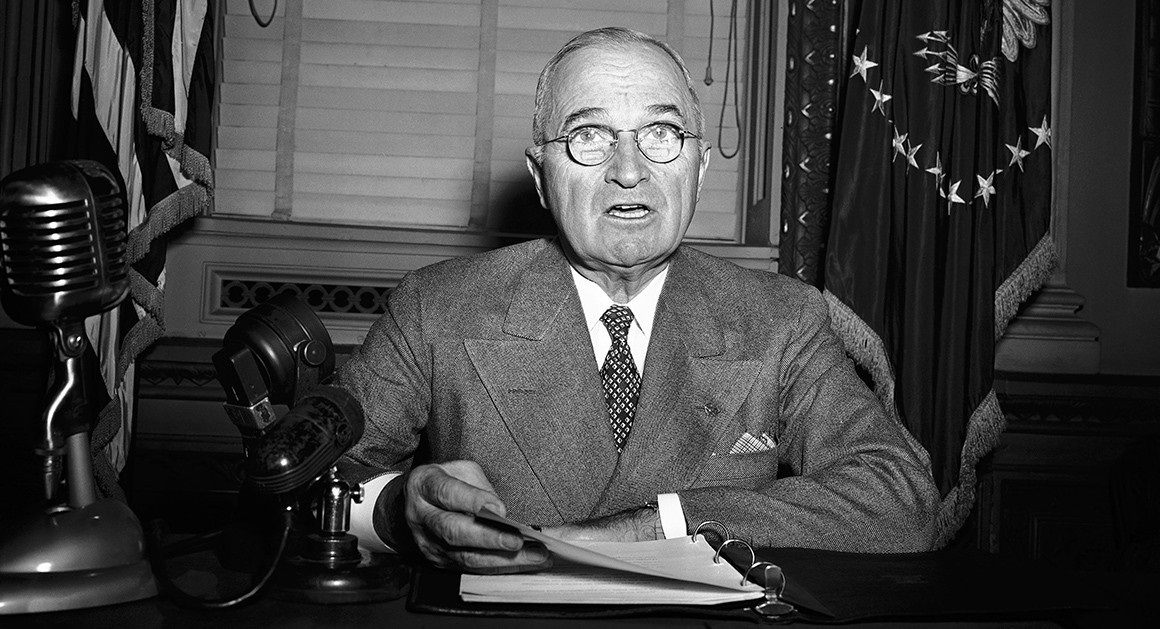
The nuclear-capable B-29’s were under military control, but only the President could officially authorize the use of atomic weapons. Nonetheless, MacArthur seemed intent on using them if he felt the need, and was not shy about making his views known – quite openly making statements to the press and letters to Congressmen that were at odds with the official doctrine of the Truman administration.
This was an unacceptable undermining of Presidential authority in Truman’s eyes, so he fired MacArthur and replaced him with another veteran of the World War II, General Matthew Ridgeway. The firing of MacArthur in many ways overshadowed the war itself, and Truman’s popularity plunged to the lowest level that any American President has ever had, and was a major factor in Truman’s decision to not run for re-election.
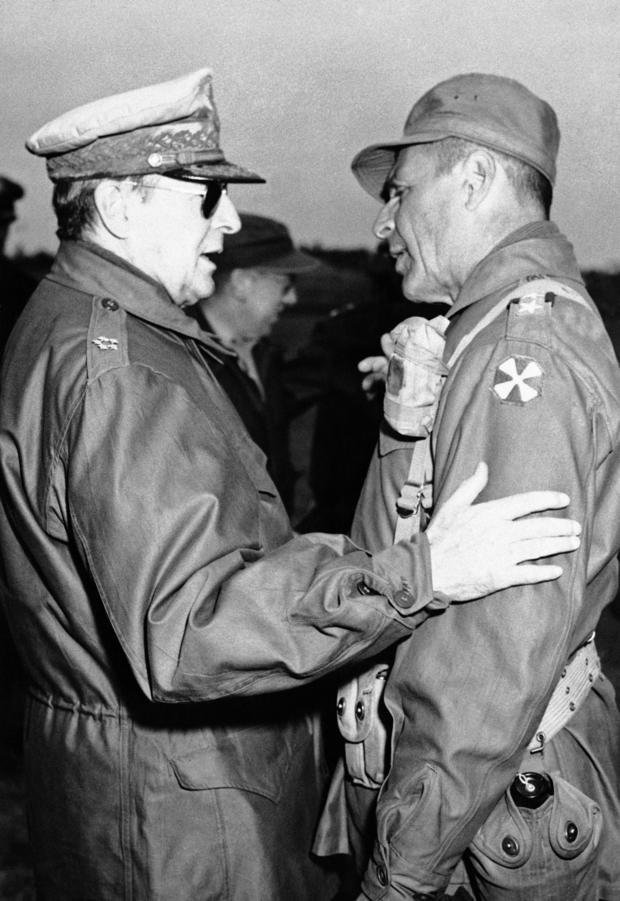
The Aftermath
On the military front, between April and June 1951 the US conducted a series of coordinated bombings and strikes that effectively brought the war to a halt. Operation Hudson Harbor is one of the most infamous military maneuvers conducted in the Korean War, which acted as a test run for atomic bombing. These tests using dummy and conventional bombs accomplished the goal of diverting North Korea’s attention enough for the United Nations and South Korea to take back their half of the peninsula.
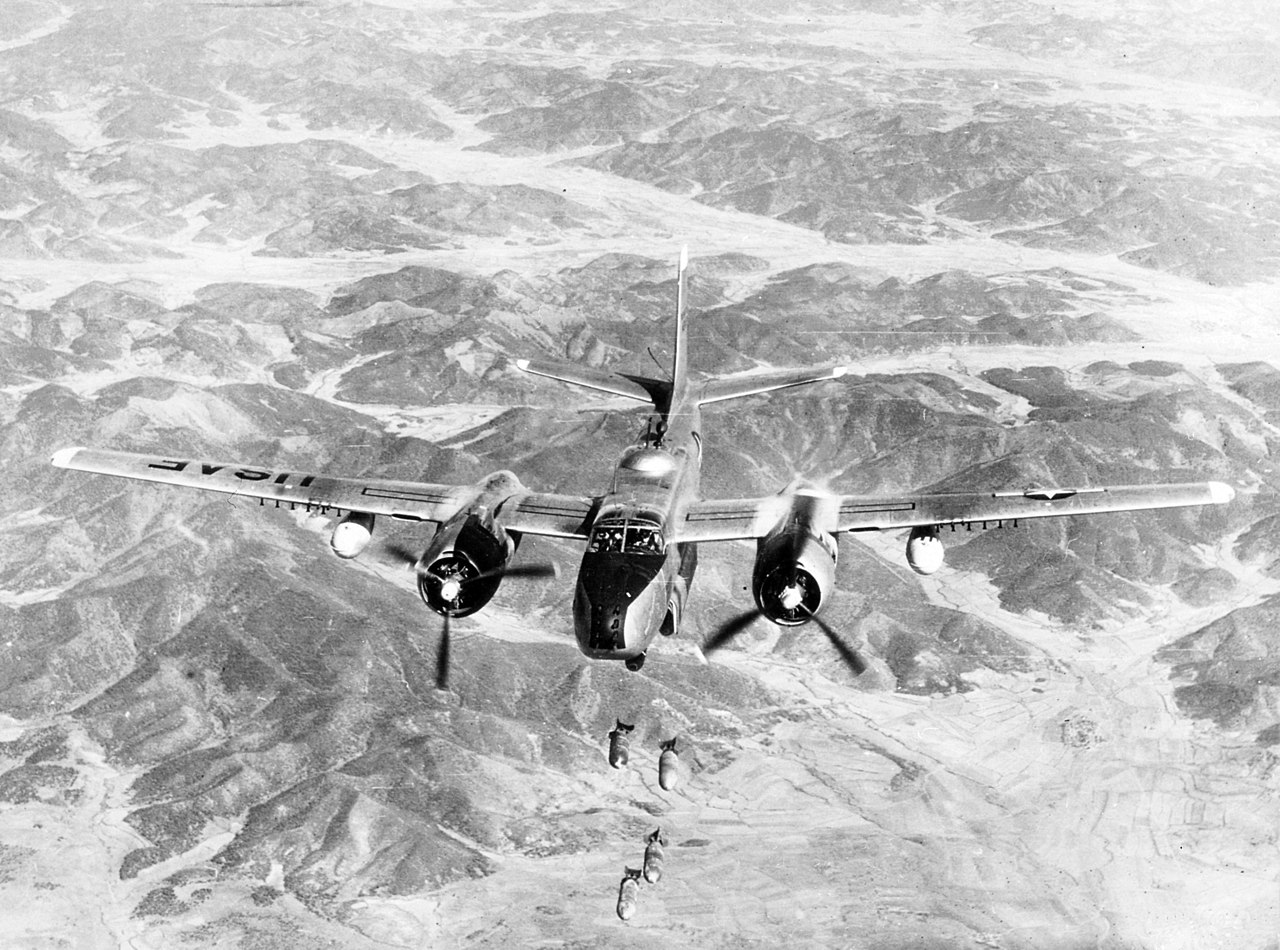
In June of that year, the atomic-ready Boeings were flown home and would never see the battlefield. Still, an armistice wouldn’t be signed until July 27, 1953, by which point over 150,000 tons of conventional bombs would be dropped on North Korea. The Korean War came dangerously close to erupting into a nuclear war, which likely could have sparked a Third World War. The Korean War has also infamously never officially ended; to this day it remains only a negotiated truce, and North Korea remains a stubborn thorn in the side of the United States, and a threat to the peace and stability of the whole of Asia that could still end up sparking the start of World War II.
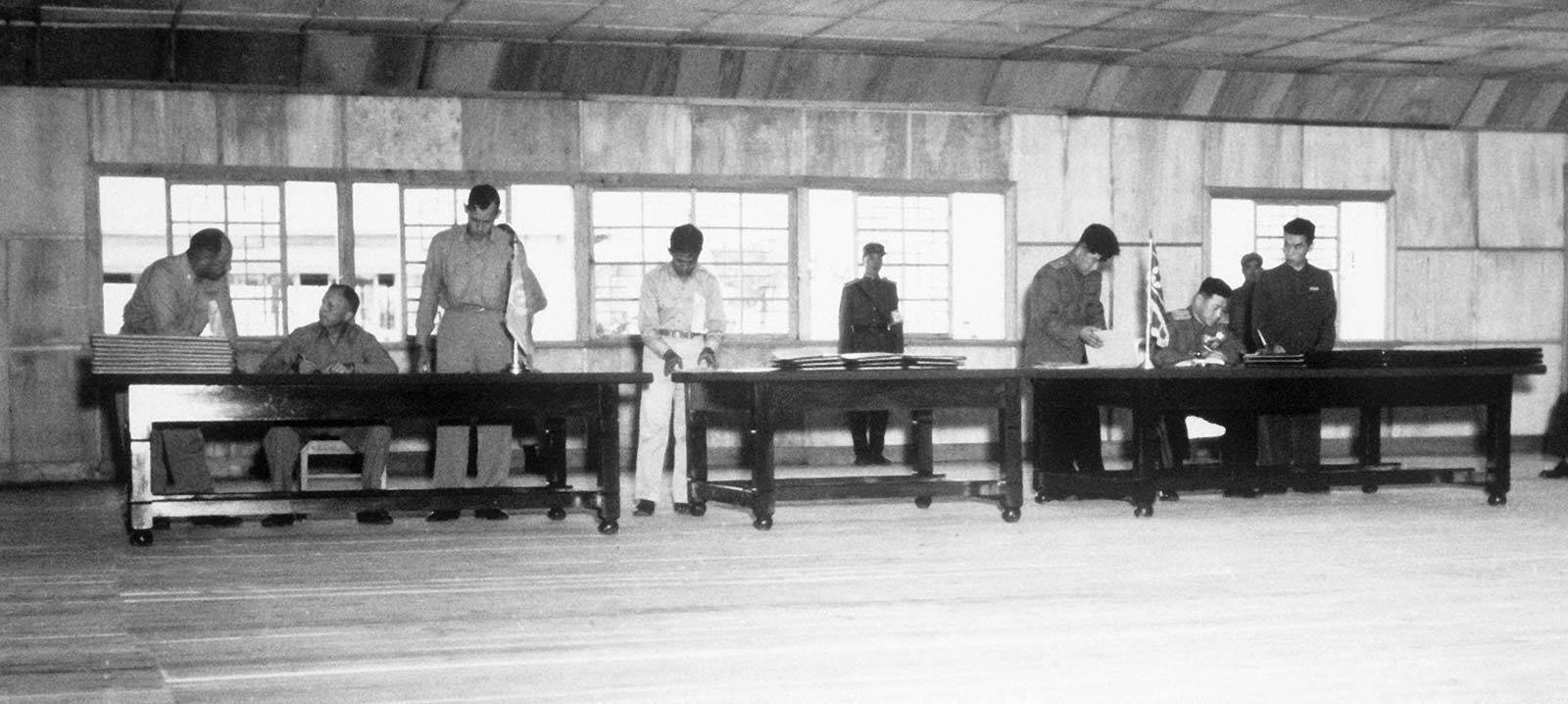
We will never know if General MacArthur’s plan would have halted the ascendency of Chinese and Russian power, but one thing is clear – despite the fear of provocation by President Truman, this was only the beginning of the Cold War and the nuclear tension that continues to this day.
The Korean War should also act as a reminder of the consequences of under-estimating the enemy, ignoring intelligence, and of being overly-cautious and indecisive. It also demonstrates clearly the complexities that can arise when politicians meddle in military affairs and generals meddle in politics – and this ultimately cost both Truman and MacArthur their jobs, and left the world with a lingering problem on the Korean Peninsula.
Article by Richard Douglas
—
Richard Douglas writes on firearms, defense and security issues. He is the founder and editor of Scopes Field, and a columnist at The National Interest, 1945, The Daily Caller, and other publications.
